Aglaonema – Exotic Houseplant
Aglaonema, commonly known as Chinese Evergreen, is a popular exotic houseplant appreciated for its beautiful foliage and adaptability to indoor environments.
Origin and Taxonomy:
Aglaonema plants are native to the tropical regions of Southeast Asia, primarily originating from Indonesia, Malaysia, and the Philippines. They belong to the Araceae family and are part of the Aglaonema genus, which consists of approximately 50 recognized species.
Leaf Characteristics:
Aglaonema plants are revered for their striking foliage, featuring various patterns and colour combinations. The leaves are typically large, glossy, and oval-shaped, showcasing vibrant shades of green, silver, cream, and pink. The unique leaf patterns make Aglaonema a stunning addition to any indoor space
Growth Habits:
Aglaonema plants are relatively slow-growing, compact plants that can reach 1 to 3 feet (30 to 90 centimetres), depending on the variety. They have an upright growth habit and form dense clumps of foliage, adding a lush and tropical touch to any room.
Light Requirements:
Aglaonema plants prefer bright, indirect light. They can tolerate lower light conditions, making them suitable for areas with less natural sunlight. However, it’s essential to avoid exposing them to direct sunlight, as it can scorch the leaves.
Watering Needs:
Aglaonema plants have moderate water requirements. It is crucial to maintain consistent soil moisture without overwatering. Allow the top inch of soil to dry out between waterings and ensure proper drainage to prevent waterlogging, which can lead to root rot.
Soil Requirements:
Aglaonema plants thrive in well-draining soil that retains moisture without becoming waterlogged. A mix of peat moss, perlite, and potting soil provides an ideal growing medium for these plants. Avoid using heavy or compacted soils.
Temperature and Humidity:
Aglaonema plants prefer average room temperatures ranging from 65°F to 75°F (18°C to 24°C). They can tolerate slightly cooler temperatures but are sensitive to cold drafts. They adapt well to typical indoor humidity levels but appreciate slightly higher humidity, which can be achieved through misting or using a humidifier.
Maintenance and Pruning:
Aglaonema plants are relatively low-maintenance and require minimal pruning. Remove any yellow, damaged, or old leaves using clean and sharp scissors. Regularly wipe the leaves with a damp cloth to keep them clean and dust-free.
Propagation:
Aglaonema plants can be propagated through stem cuttings or division. Stem cuttings can be rooted in water or a well-draining potting mix. Division involves:
- Separating the plant into smaller sections.
- Ensuring each section has roots and foliage.
- Replanting them individually.
Common Pests and Diseases:
Aglaonema plants are generally resistant to pests and diseases. However, they occasionally face issues with mealybugs, spider mites, or scale insects. Regularly inspect the plant for signs of infestation and take appropriate measures to control and treat the pests.
Air Purifying Qualities:
Aglaonema is known to have air-purifying properties. It will help to clean out formaldehyde and benzene from the air in your home and gives fresh Oxygen.
Aglaonema is good luck and happiness bringer houseplant.
Aglaonema plants are exceptional additions to indoor spaces, offering exotic beauty and easy-care qualities. With their stunning foliage and adaptability to various light and humidity conditions, Aglaonema plants can thrive in different environments. Enjoy the elegance and allure of these exotic houseplants in your living spaces.
Things to know about AGALONEMA
Common (vernacular) Name
एग्लोनेमा / एग्लोनीमा (Hindi), Chinese Evergreen, Silver Evergreen, Pewter, Painted Drop-Tongue and many more.
Botanical Name
Aglaonema Commutatum
Origin
Subtropical forests regions of southeastern Asia from northeastern India across southern China and Indonesia through New Guinea.
Family
Araceae
Plant Type
Tropical plant
Plant Features
Ornamental Foliage / Evergreen
Life Cycle
Perennial
Landscape Uses
Container Planting, Interiorscape and General landscape.
Species
Aglaonema brevispathum, Aglaonema chermsiriwattanae, Aglaonema cochinchense, Aglaonema commutatum , Aglaonema cordifolium, Aglaonema costatum, Aglaonema costatum, Aglaonema densinervium, Aglaonema flemingianum, Aglaonema hookerianum, Aglaonema marantifolium, Aglaonema modestum, Aglaonema nebulosum, Aglaonema nitidum, Aglaonema ovatum, Aglaonema philippinense, Aglaonema pictum, Aglaonema pumilum, Aglaonema roebelinii, Aglaonema rotundum, Aglaonema simplex, Aglaonema tricolor, Aglaonema vittatum
Varieties
It comes with hundreds of different varieties in a diversity of leaf colorations. Some famous verities are available in a myriad of colours and exotic variegation, such as Lipstick Aglaonema, Red Peacock, Red Gold, Red Valentine, Red Anjamani, Pink Dalmatian, Pink Moon, Cutlass, Emerald Bay, Harlequin, Silver Queen, Silver King, Suzy, Chocolate, Prestige, Creta, First Diamond, Sparkling Sarah, Maria, Bidadari, Super White, White Rain, Prosperity, Modestum, Siam Aurora, Pictum Tricolor, and many more.
Size
Height : 1 to 2 feet tall and Width : 1 to 2 feet wide when mature.
Indoors or Outdoors
Outdoors : Aglaonemas can be used outdoors in shady plantings.
Indoors : Excellent plant for low-light and can grow in shade, it tolerates low light so well.
Blooming / Flowering
Spadix Flower. Blooming period is Spring or at the beginning of Autumn. Flowers aren’t that attractive but not ugly, either.
Flower Colour
It’s come with White, Cream / Off-White, Green.
Lucky Plant
Considered as the as Lucky Plant as per Feng Shui and bringer of fortune Good luck and Happiness.
Lighting / Sun Exposure
Semi-Shade / Indirect Sunlight or Full Shade.
Temperature
Grow best preferably above 15°C and can be tolerate max temp. as high as 30°C.
Growth Rate
Aglaonema is a slow growing plant.
Watering
Moderate watering, you shouldn't add too much or too little water. Not tolerate overwatering.
Fertilizer
Slow-release fertilizer, or a water-soluble liquid fertilizer once or twice in the growing season (Spring through Summer).
i.e. - Fish/Seaweed Emulsion, Compost, 10-10-10 fertilizer (NPK), liquid organic fertilizer etc.
Pruning
Pruning of Aglaonema not much is needed. If required Prune only old leaves which turn yellow.
Propagation
Seeds : The best time to sow your Aglaonema seeds is in the end of Winter / early Spring.
Stem Cuttings : Very easy to propagate in water or in soil via stem cuttings, and can be done during the warm growing season.
Division : Division of Aglaonema can be done in Rainy season, or better in February to March.
Dormancy Period
Month : November to February (winter season)
Drops foliage, Watering minimally.
Avoid : Propagate, Fertilize and Repotting.
Container
Ceramic Pot, Plastic Pot, Terracotta or Clay Pot is preferred, as it drains well and dries out more quickly.
Soil Type
A well-drained peat-based potting soil with extra perlite is recommended. Prevent soggy potting medium.
Our recommendation for potting mix : Equal part mixture of Garden Soil (25%) + Compost (25%) + River Sand (25%) + Cocopeat (25%). You can substitute Rice Husk, Vermicompost, Perlite etc.
Soil pH
Lightly Acidic soil - Ideally 5.6 to 6.5 pH (potential of hydrogen) is recommended for Aglaonema.
Repotting
It is advisable to repot the Aglaonema 2-3 years preferably spring or warm season.
Maintenance
Low maintenance and easy to grow.
Properties
Toxic or Poisonous to both humans and pets upon ingestion.
Benefits
Excellent indoor air purifier, It purifies indoor air by removing toxic indoor chemicals, such as formaldehyde and benzene.
Special Features
Doesn't attract hummingbirds and pollinators like butterflies and bees or wasps.
Infestation / Pests
Aphids, Scale insects, Mealy bugs, Spider mites and caterpillars etc.
Diseases / Problem
Physiological Problem : Anthracnose, Curvularia, Copper Deficiency, Chilling injury, Excess light and/or temperature and Bent-tip.
Bacterial Problem : Bacterial Leaf Spot and Xanthomonas leaf spot.
Fungal Problems : Fusarium stem rot, Root rot, Lichen and Myrothecium leaf spot.
Some Glimpse of AGLAONEMA

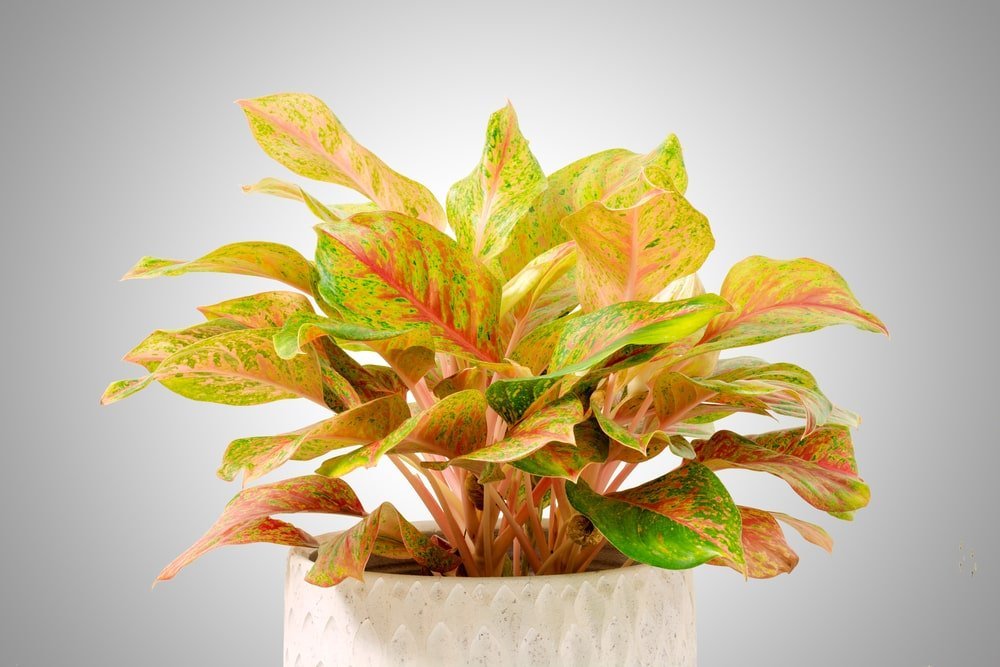
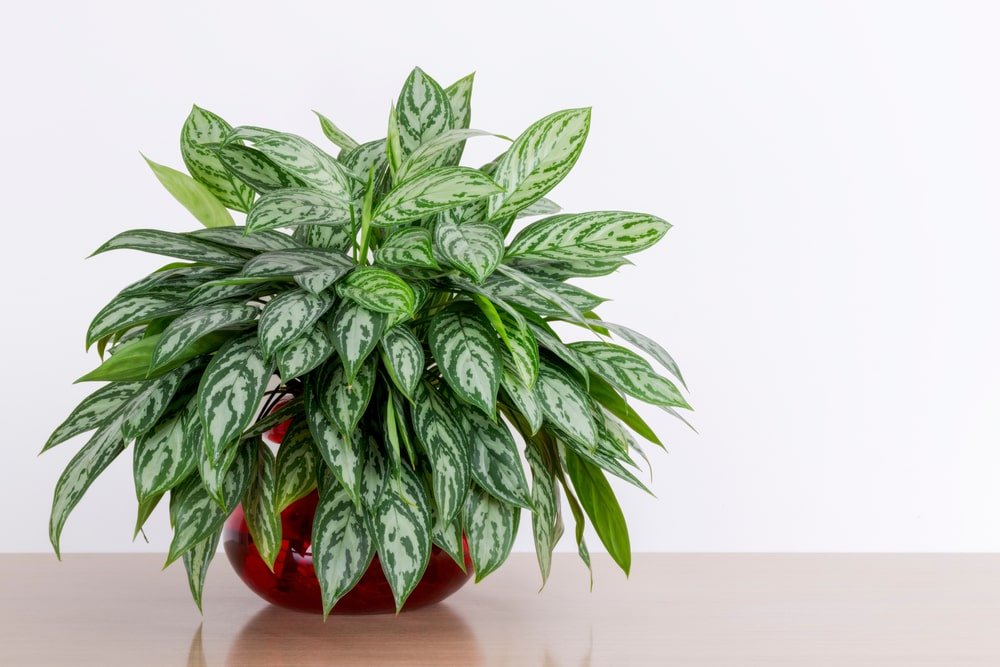
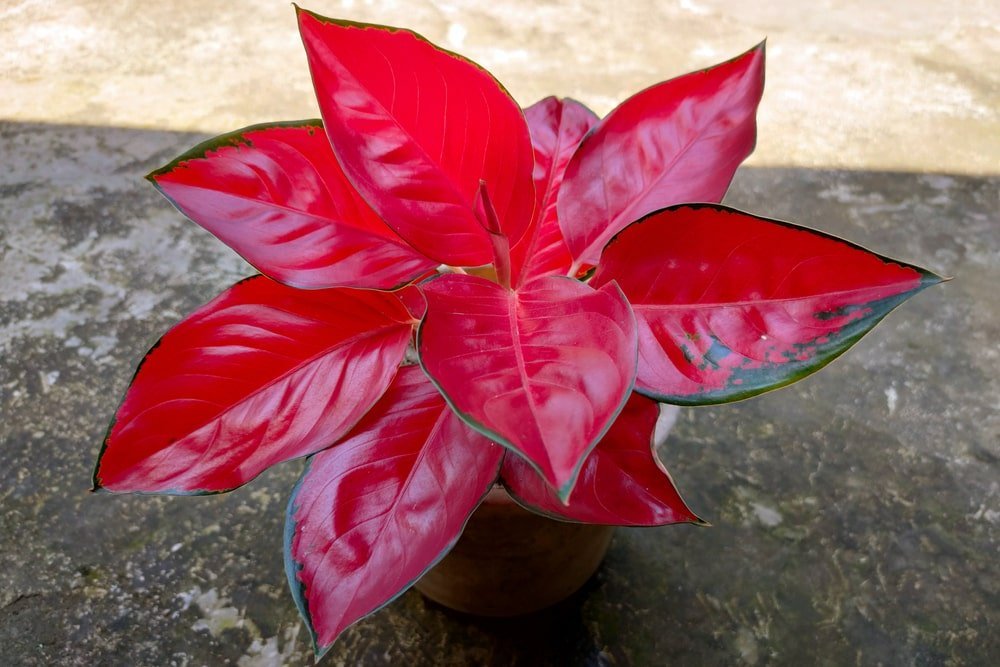

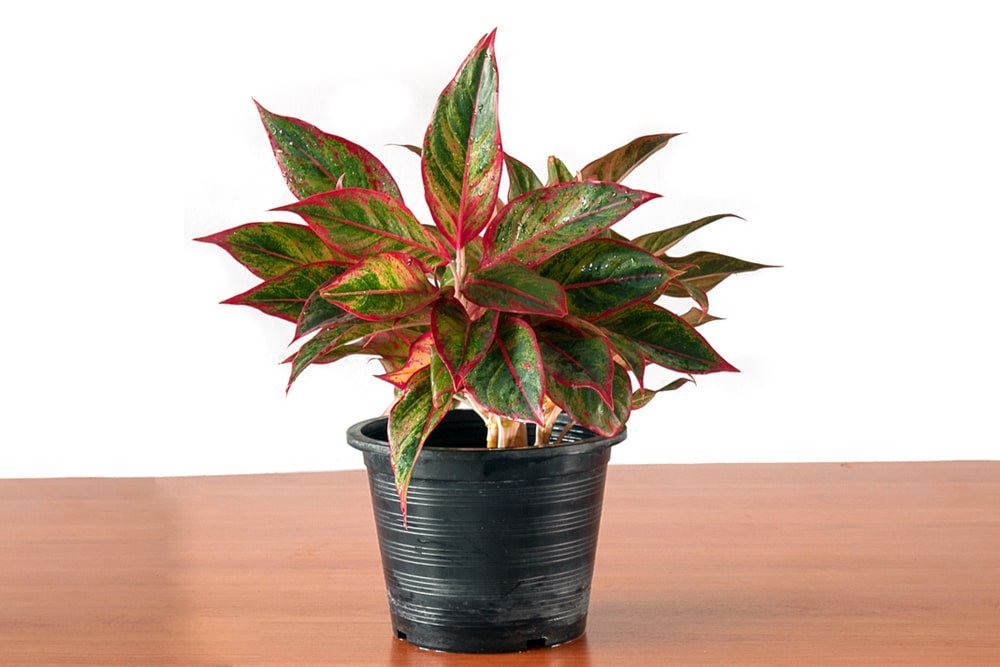
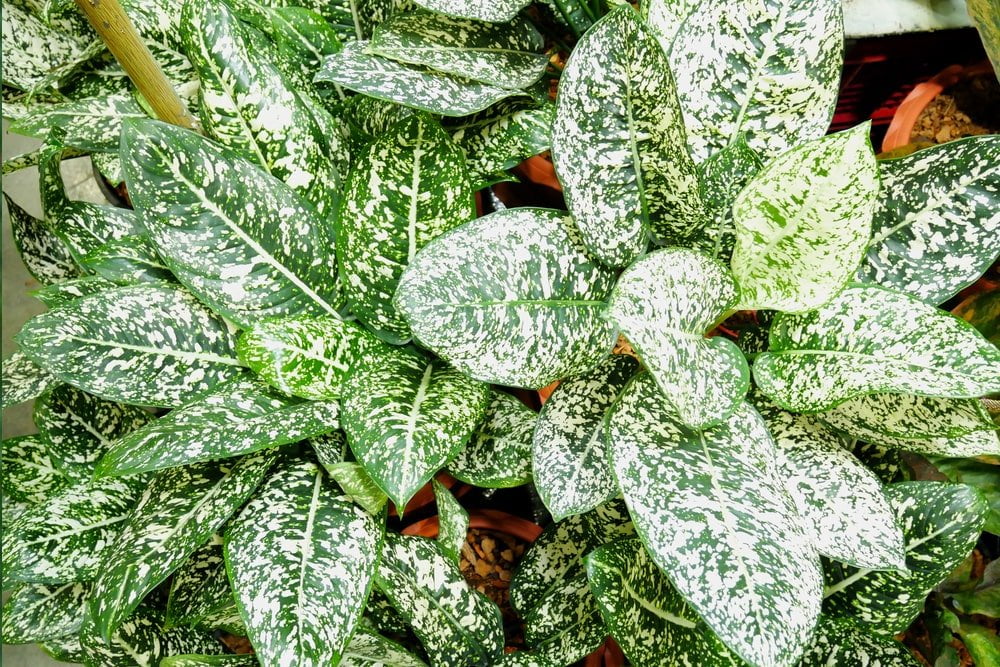


No comment